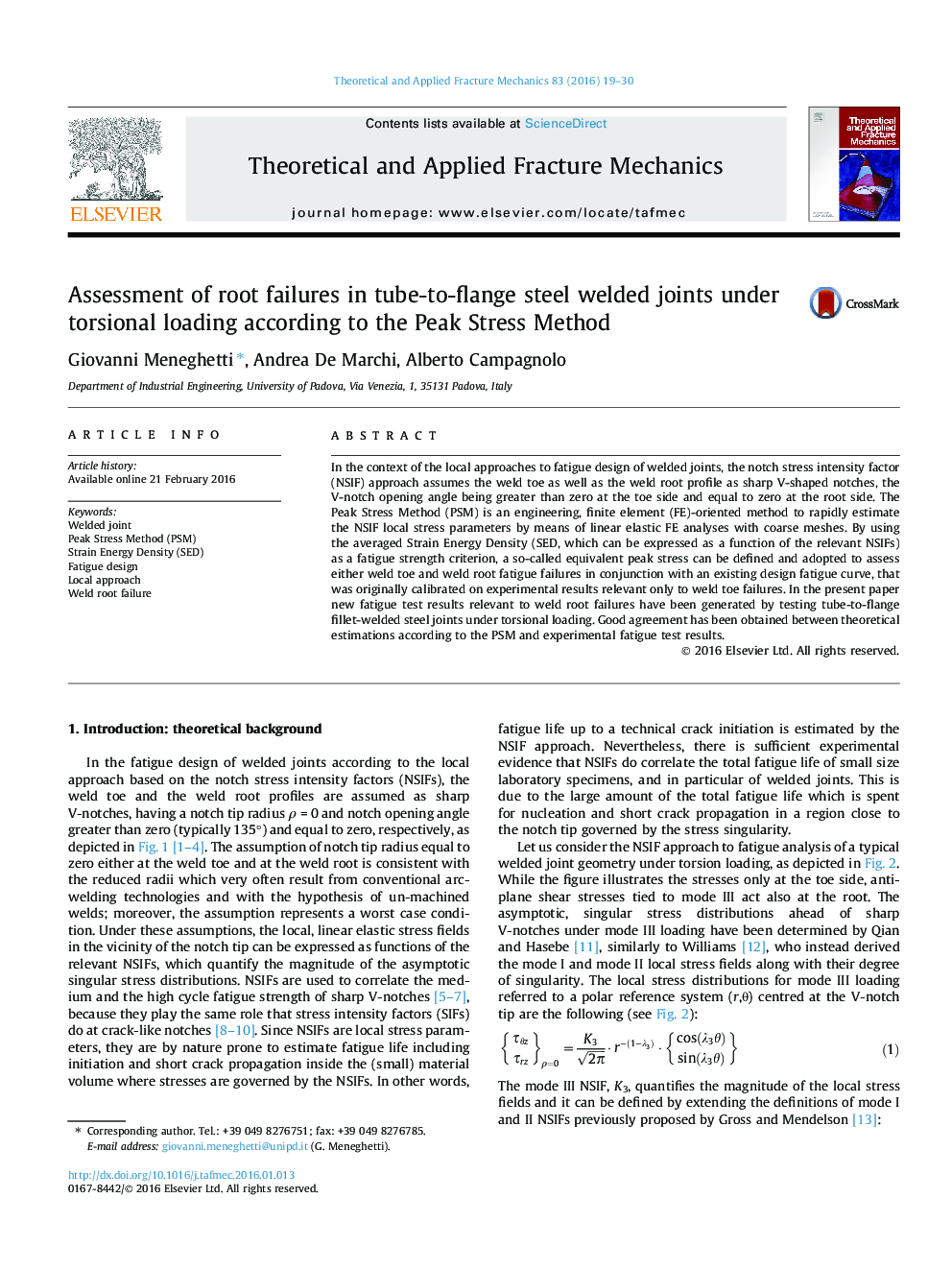| Article ID | Journal | Published Year | Pages | File Type |
|---|---|---|---|---|
| 804671 | Theoretical and Applied Fracture Mechanics | 2016 | 12 Pages |
•The Peak Stress Method is applied to fatigue analysis of tube-to-flange welded joints.•Weld root and weld toe failures are assessed using a single design fatigue curve.•The Peak Stress Method adopts coarse FE meshes to rapidly calculate the design stress.
In the context of the local approaches to fatigue design of welded joints, the notch stress intensity factor (NSIF) approach assumes the weld toe as well as the weld root profile as sharp V-shaped notches, the V-notch opening angle being greater than zero at the toe side and equal to zero at the root side. The Peak Stress Method (PSM) is an engineering, finite element (FE)-oriented method to rapidly estimate the NSIF local stress parameters by means of linear elastic FE analyses with coarse meshes. By using the averaged Strain Energy Density (SED, which can be expressed as a function of the relevant NSIFs) as a fatigue strength criterion, a so-called equivalent peak stress can be defined and adopted to assess either weld toe and weld root fatigue failures in conjunction with an existing design fatigue curve, that was originally calibrated on experimental results relevant only to weld toe failures. In the present paper new fatigue test results relevant to weld root failures have been generated by testing tube-to-flange fillet-welded steel joints under torsional loading. Good agreement has been obtained between theoretical estimations according to the PSM and experimental fatigue test results.
